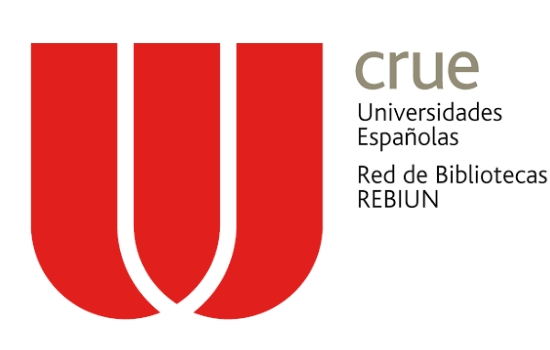O Programa Etnomatemática como uma Ação Pedagógica para o Desenvolvimento da Educação Financeira de Alunos Surdos que se comunicam em Libras
Keywords:
Programa Etnomatemática, Educação Financeira, Alunos Surdos, Língua Brasileira de Sinais (Libras), Ethnomathematics Program, Financial Education, Deaf Students, Brazilian Sign Language (Libras)Abstract
Resumo
Este artigo é um estudo teórico no qual se propõe o programa etnomatemática como uma ação pedagógica para o desenvolvimento da educação financeira de alunos Surdos que se comunicam em Língua Brasileira de Sinais – Libras. Dessa maneira, existe a necessidade de se compreender as especificidades dos alunos Surdos, bem como verificar os conceitos e nomenclaturas apropriadas ao referir-se às pessoas com surdez e como caracterizá-los como membros de um grupo cultural específico. Apresenta-se, também, um breve relato sobre a Educação Matemática e o programa etnomatemática, em seguida mostra-se a relação entre a Cultura Surda e o programa etnomatemática. E, por fim, abordamos a Educação Financeira para alunos Surdos. Finalizamos este estudo apontando como programa etnomatemática pode ser utilizado como uma ação pedagógica para o desenvolvimento da educação financeira de alunos Surdos que se comunicam em Libras.
Abstract
This article is a theoretical study in which it proposes an ethnomathematics program as pedagogical action for the development of financial education for deaf students who communicate in Brazilian sign language (libras). There is a need to comprehend the specificities of deaf students, as well as to verify concepts and nomenclatures adequate that refer to people with hearing loss and how to characterize them as members of a specific cultural group. A brief report on mathematics education and ethnomathematics program is presented, and then the relation between the deaf culture and the ethnomathematics is demonstrated. We approach financial education for deaf students. We conclude this study by pointing out how an ethnomathematics program can be used as a pedagogical action in the development of financial education for students who communicate in Libras.
Downloads
References
Austin, G. F. (1975). Knowledge of selected concepts obtained by an adolescent deaf population. American Annals of the Deaf, 120, 360-370.
Bailey, D. H., Siegler, R. S., & Geary, D. C. (2014). Early predictors of middle school fraction knowledge. Developmental Science, 17(5), 1-11.
Bertoli, V. (2012). O ensino da matemática para alunos surdos. Anais do III Simpósio de Ensino de Ciência e Tecnologia (pp. 1-8). Ponta Grossa, PR: SINECT.
Bone, A. A., Carr, J. A., Daniele, V. A., Fisher, R., Fontes, N. B., Innes, J. I., Maher, H. P., Osborn. H. G., & Rockwell, D. L. (1984). Promoting a clear path to technical education. Washington, D.C. :Model Secondary School for the Deaf.
Brasil. (1998). Parâmetros curriculares nacionais: matemática. Brasília: MEC/SEF.
Brasil. (2005). Documento subsidiário à política de inclusão. Brasília, DF: MEC/SEF.
Brasil. (2006). Orientações Curriculares para o Ensino Médio. Brasília, DF: MEC/SEB.
Brasil. (2013). Manual de procedimentos em audiometria tonal limiar, logoaudiometria e medidas de imitância acústica. Brasília, DF: Conselho Federal de Fonoaudiologia.
Bull, R. (2008). Deafness, numerical cognition, and mathematics. In M. Marschark, P. Hauser, (Eds.). Deaf cognition: foundations and outcomes (pp. 170-200). New York, NY: Oxford University
Press.
Campos, A. B. (2013). Investigando como a educação financeira crítica pode contribuir para tomada de decisões de consumo de jovens-indivíduos-consumidores. Mestrado Profissional em Educação Matemática. Juiz de Fora, MG: Universidade Federal de Juiz de Fora.
Carneiro, K. T. A. (2012). Cultura Surda na aprendizagem matemática da sala de recurso do Instituto Felipe Smaldone: uma abordagem etnomatemática. Anais do 4º Congresso Brasileiro de Etnomatemática. Belém, PA: ICEm4.
Dana, S., & Pires, M. C. (2008). 10x sem juros. São Paulo, SP: Saraiva: Letras & Lucros.
Dizeu, L. C. T. B., & Caporali, S. A. (2005). A língua de sinais constituindo o surdo como sujeito. Educação Social, 26(91), 583-597.
Dorziat, A. (2004). Educação de surdos no ensino regular: inclusão ou segregação?. Cadernos de Educação Especial, 2(24), 77-85.
D’Ambrosio, U. (1993). Etnomatemática: um programa. Educação Matemática em Revista, 1(1), 5-11.
D’Ambrosio, U. (1996). Educação matemática: da teoria à prática. São Paulo, SP: Editora Papirus.
D’Ambrosio, U. (2003). História, etnomatemática, educação e modelagem. XI CIAEM. Blumenau, SC: FURB.
D’Ambrosio, U. (2005). Etnomatemática: elo entre as tradições e a modernidade. 2ª. Edição. Belo Horizonte, MG: Autêntica.
D’Ambrosio, U. (2008). O programa etnomatemática: uma síntese. Acta Scientiae, 10(1), 7–16.
D’Ambrosio, U. (2009). Etnomatemática: elo entre as tradições e a modernidade. Belo Horizonte, MG: Autêntica.
Felipe, T. A. (2008). LIBRAS em contexto: curso básico. Livro do estudante. Brasília, Ministério da Educação/Secretaria de Educação Especial.
Flemming, D. M., Luz, E. F., & Mello, A. C. C. (2005). Tendências em educação matemática. Palhoça, SC: Editora InisulVirtual.
Gesser, A. (2009). LIBRAS? Que língua é essa? crenças e preconceitos em torno da língua de sinais e da realidade surda. São Paulo, SP: Parábola Editorial.
Hall, J. (2005). Book reviews on teaching mathematics to deaf children. Deafness and Educational International, 7(3), 173-176.
Kelly, R. R., & Gaustad, M. G. (2007). Deaf college students’ mathematical skills relative to morphological knowledge, reading level, and language proficiency. Journal of Deaf Studies and Deaf Education, 12(1), 25-37.
Knijnik, G., Wanderer, F., & Oliveira, C. J. (2004). Etnomatemática, currículo e formação de professores. Santa Cruz do Sul, RS: EDUNISC.
Kritzer, K. (2008). Family mediation of mathematically based concepts while engaged in a problem-solving activity with their young deaf children. The Journal of Deaf Studies and Deaf Education, 13(4), 503-517.
Laborit, E. (1994). O voo da gaivota. São Paulo, SP: Best Sellers.
Lelis, M. G. (2006). Educação financeira e empreendimento. Viçosa, MG: Centro de Produções Técnicas.
Lyman, R. C., & O’ Brien, M. J. (2003). Cultural traits: units of analysis in early twentieth-century anthropology. Journal of Anthropological Research, 59, 225-250.
Malloy, C. E. (2002). Democratic access to mathematics through democratic education. An introduction. In L. D. English (Ed.). Handbook of international research in mathematics education (pp. 17-25). Mahwah, NJ: Erlbaum.
Markey, C. (2003). An investigation into the use of structured games to teach early fraction concepts to students who are deaf or hard of hearing. (Unpublished master thesis). Griffith University. Mt. Gravatt Campus. Brisbane, Australia.
Marschark, M., & Everhart, V. S. (1999). Problem solving by deaf and hearing children: Twenty questions. Deafness and Education International, 1, 63-79.
Moura, M. C. (2000). O surdo: caminhos para uma nova identidade. Rio de Janeiro, RJ: Revinter.
Nunes, T. (2004). Teaching mathematics to deaf children. London, England: Whurr.
Nunes, T., & Moreno, C. (2002). An intervention program for promoting deaf pupils’ achievement in mathematics. Journal of Deaf Studies and Deaf Education, 7(2), 120-133.
Pagliaro, C. (1998). Mathematics preparation and professional development of deaf education teachers. American Annals of the Deaf, 143(5), 373-379.
Pagliaro, C., & Kritzer, K. (2005). Discrete mathematics in deaf education: a survey to determine knowledge and use. American Annals of the Deaf, 150(3), 251-259.
Perlin, G. T. (2002). História dos Surdos. Florianópolis, SC: UDESC/CEAD.
Post, T. R., Behr, A.J., & Lesh, R. (1984). The role of rational number concepts in the development of proportional reasoning skills. Washington, DC: Report n. NSF-DPE-8470177.
Quadros, R. M., & Karnopp, L. (2004). Língua de sinais brasileira: estudos linguísticos. Porto Alegre, RS: ArtMed.
Quadros, R. M., & Perlin, G. T. T. (2007). Estudos Surdos II. Petrópolis, RJ: Arara Azul.
Rosa, M. (2010). A mixed-methods study to understand the perceptions of high school leaders about English Language Learners (ELL) students: the case of mathematics. (Tese de Doutorado). College of Education. Sacramento, CA: California State University, Sacramento - CSUS.
Rosa, M., & Orey, D. C. (2006). Abordagens atuais do programa etnomatemática: delinenando-se um caminho para a ação pedagógica. BOLEMA, 19(26), 19-48.
Sá. N. R. L. (2006). Cultura, poder e educação de surdos. São Paulo, SP: Paulinas.
Santana, A. P., & Bergamo, A. (2005). Cultura e identidade surdas: encruzilhada de lutas sociais e teóricas. Educação Social, 26(91), 565-582.
Scott-Wilson, R. (2009). A teacher’s journey into problem solving mathematics with deaf learners. Master in Education. Centre for Deaf Students. Faculty of Humanities. Johannesburg, South Africa: University of the Witwatersrand.
Skliar, C. (2004). Educação e exclusão: abordagens sócio antropológicas em educação especial. Porto Alegre, RS: Mediação.
Strobel, K. (2006). Surdos: vestígios culturais não registrados na historia. (Dissertação de Mestrado). Florianópolis: UFSC.
Strobel, K. (2008). As imagens do outro sobre a cultura surda. Florianópolis. Editora UFSC.
Strobel, K. (2009). História da educação de Surdos. Florianópolis, SC: UFSC.
Swanwick, R., Oddy, A., & Roper, T. (2005). Mathematics and deaf children: an exploration of barriers to success. Deafness and Education International, 7(1), 1-21.
Tanabe, M., & Lucey, T. A. (2015). Interdisciplinary connections: teaching mathematics for social justice and financial literacy. Journal of Mathematics & Culture, 9(1), 108-118.
Van de Walle, J. A. (2004). Elementary and middle school mathematics: Teaching developmentally. Boston, MA: Pearson.
Zarfaty, Y., Nunes, T., & Bryant, P. (2004). The performance of young deaf children in spatial and temporal number tasks. Journal of Deaf Studies and Deaf Education, 9(3), 315-326.
Zevenbergen, R. (2002). Mathematics, social class and linguistic capital: an analysis of a mathematics classroom. In B. Atweh, and H. Forgasz, (Eds.). Social-cultural aspects of mathematics education: an international perspective (pp. 201-215). Mahwah NJ: Lawrence Erlbaum and Associates.
Downloads
Published
How to Cite
Issue
Section
License
Once the article is accepted by the Latin American Journal of Ethnomathematics, the authors cede the rights to publish and distribute the text electronically, including storing it and making it available online.
The authors can distribute their own material without soliciting permission from the Latin American Journal of Ethnomathematics, whenever mentioning that the original version is found at http://www.revista.etnomatematica.org
Copyright © 2008, Latin American Journal of Ethnomathematics
All contents of the Latin American Journal of Ethnomathematics are published under the _ and can be used freely, giving credits to the authors and to the Journal, as established by this license.











